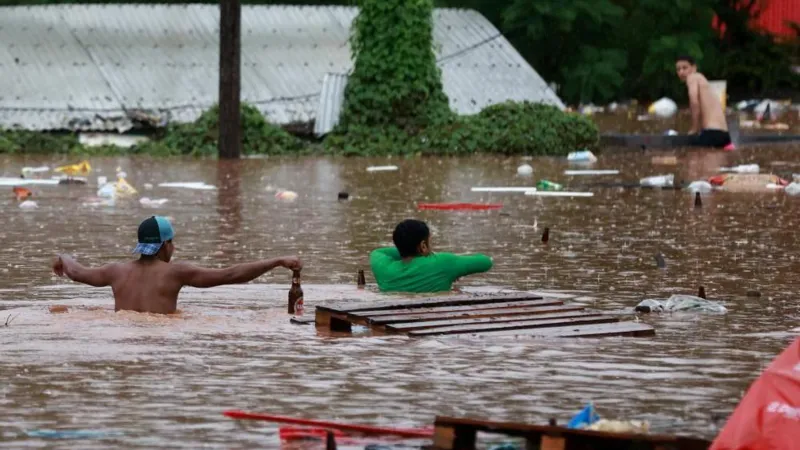Authorities in the Brazilian state of Rio Grande do Sul have confirmed four deaths and 54 cases of the waterborne leptospirosis disease after the region experienced unprecedented floods in the months of April and May.
The state’s health department was quoted in a statement as saying that as many as 800 suspected cases are currently being investigated. More than 165 people were killed in the floods and many others are still missing.
According to reports, more than 2.3 million Brazilians from 469 municipalities in Rio Grande do Sul have been affected by what has been described as a “climate disaster” by the Brazilian government.
At least 581,000 people are displaced, while temporary accommodation has been able to house 55,000 Gauchos (people from Rio Grande do Sul), according to local media reports. Many cities in the state are still under water and conditions could see leptospirosis cases go up.
Read also: Flood kills 10 members of single family in Afghanistan
The disease’s symptoms include fever, muscle ache and nausea followed by vomiting.
The state’s health department has warned residents that flood water may mix with sewage, leading to the transmission of diseases like leptospirosis and hepatitis A. Brazil vaccinates its population against hepatitis A, but given the magnitude of this advises people to still avoid consuming water or food that might be contaminated with water from the floods.
Recovery and rescue efforts are ongoing and the federal government has allocated more than R$1,8bn (£275m, $348m) to support Rio Grande do Sul.
As flood waters lower, the full-scale of the damage in Brazil’s southernmost state is becoming clearer. Those who were able to return to their homes try to salvage belongings that withstood the flooding.
Rio Grande do Sul has a population of more than 10m inhabitants across 497 municipalities. The state borders Uruguay and Argentina.
Story was adapted from BBC.
